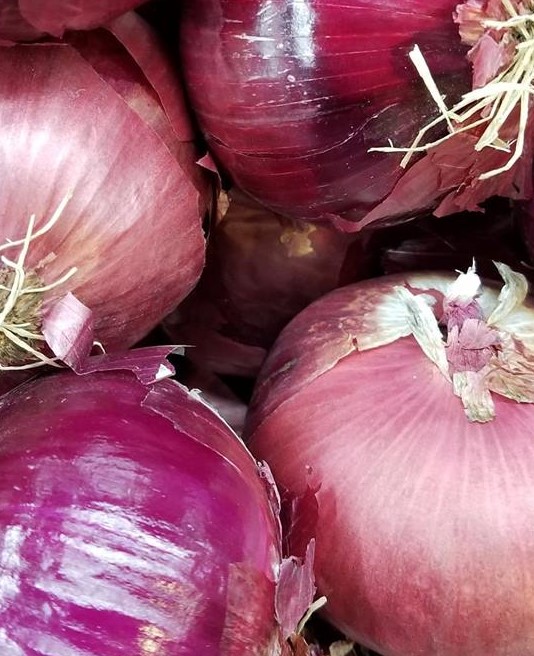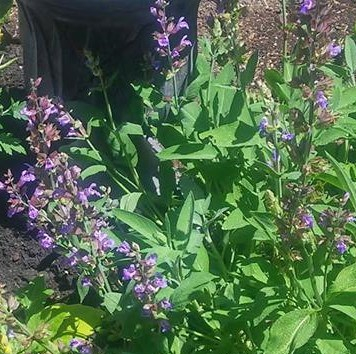This is a list of my favorite organic plants to grow, I will add to the list as I find other organic and heirloom plants and herbs that I have success with.
Organic Lettuce – Many Varieties

Lettuce is one of the easiest vegetables to grow! In the early spring or fall, when temperatures drop into the low 50’s to the 40’s at night, and daytime temperatures are mild, is a good time to start your lettuce seeds. In the spring, wait until at least two weeks after the last frost. If you use a greenhouse or solarium, of course, you can start a few weeks earlier in the spring, depending on how good your temperature control is inside the building you are using. If starting from seed (May I suggest “Seed Saver’s Exchange” online, they carry so many varieties), you can plant your seedlings not long after they sprout, since lettuce seedlings are more tolerable to cold temperatures than most vegetable plants.
Lettuce do well with even, moist soil continuously throughout the growing season. Too much water will lead to rot, but too little can lead to wilting and thin, bitter skin. For sunlight requirements, it’s best to plant it in a semi-shaded area so it can soak up the sun about five hours per day. Be very cautious about giving lettuce too much sun, or it can flower early before you can harvest it.
Lettuce requires loose soil. If you have heavy clay soil, you will need to amend it with sand and compost until the planting area is loose and not heavy. Be sure to buy soils and amendments from your organic soil dealer. The organic fertilizer you choose should be high in nitrogen for healthy lettuce. Another method of planting lettuce starts is to plant them in the Japanese style sphagnum moss hanging balls. You can buy these at your local nursery, or make them yourself. Be sure to fill it with the soil types I have mentioned. The moisture of the moss will be a good indication of how damp the soil is. Be sure the moss is always damp, although you will need to check that the soil is not drenched. Either one of these methods will give you a crop that you can harvest more than once, and will regrow throughout the season!
Organic Red Burgundy Onions

Organic Red Burgundy, Allium cepa var. cepa ‘Red Burgundy’. These onions are very tasty and more pleasant than the typical store-bought onions. You can find the organic seeds online from “David’s Garden Seeds,” and also many other vendors online. They are hardy plants and need full sun. Zone 3-10 is best. (Zone Maps Page Link.) Organic sandy loam will be a good choice for the growing medium. Seeds should be sown at about 1/2 inch deep, and three and 1/2 inches apart. It is very important to keep weeds from invading the seed area. Plant about 15-20 days before the last frost in your area. When the tops of these onions turn yellow, it is time to harvest!
Organic Garden Sage – Salvia Officinalis

Originally from the Mediterranean and northern Africa, the height reaches 2 to 2.5 feet. In USDA hardiness zones 5-10 it is a perennial, my garden is in zone 9b. It has purple blooms and the leaves are considered to be bluish green. (Zone Maps Page Link.) It loves full sun, medium water, and not too dry. I use my common organic soil mix from the “What Makes a Garden Organic?” page. This plant can attract butterflies. I usually see the pretty little white and bluish moths around them (they look like butterflies). I bought my heirloom common sage plant starts at a local nursery, and still have the same plants after four years. They are cut down to a minimal height every Fall and have a growth spurt in the Spring – Then the gorgeous purple flowers appear. I love to use these leaves in my Italian sauces (about half of my herbs are for those sauces!). They can be overpowering, so use only two or three leaves to start. They are supposed to be good for cooking meats also, although I don’t prepare meat, normally, so I’m not an expert on this. Many people like to dry sage to use for cleansing rituals, or just to have for sachets. I do like to dry some of my sage every year.
Heirloom Dill Plant

Anethum graveolens L. is the botanical name for this plant. The seeds are used as the herb and the leaves are also used, called “Dill Weed.” “Heirloom Organics” dill seed is a good choice for a fantastic dill plant. Sow these seeds 1/4″ deep and 1 1/2 inches apart, about the time of the last frost in your area. After planting, the seeds should be gently raked to distribute further. You can also simply plant them 7″ apart. Try both ways and determine which works best for your climate! There is no recommended hardiness zone for these plants because they are annuals. These plants do not fare well when transplanted. It is good to establish a dill area in your yard to let them reseed, if you want a lot of dill weed/seed. I grew these two summers ago, and this plant (pictured) took over a large area, an incredibly fragrant dill plant! My dill plant ended up being about three times bigger than shown in the photo. I dried the seeds and still have the dry seeds, which I like to use in Italian sauces. I have used the seeds from the plant as well as the leaves and the yellow flowers! The dill gives Italian sauce (spaghetti, pizza, other Italian pastas), a very nice bit of tang. Be sure not to overdo the use of dill however, in your foods, the taste can be overwhelming. Start out with a small amount and use according to taste. The soil used for growing this plant is my basic organic gardening soil, from the link called “Soil is everything in an organic garden,” accessible from the blog front page. A good nursery or landscape supply yard near you will probably have organic soil for sale. Ask for organic sandy loam. Watering enough to keep the soil moist or the plant can wilt easily.
Heirloom Blue Hubbard Squash
I planted this heirloom Blue Hubbard Squash last Summer in my backyard, USDA climate zone 9b. (Zone Maps Page link.) It literally took over everything in one section of my backyard. In fact, there is a lot more to the plant [this is only one plant!] to the left of the screen for about 10 more feet. It ended up climbing on the tomato plants to the right. This didn’t bother the tomatoes much at all, in fact, it shaded them from our hot Sacramento area summer. This stopped the tomato plants from wilting in the 100 degree-plus weather. I bought this plant as a plant start from the local Target store nursery. It produced six large squash and one of them topped out at about 20 pounds. I ended up giving that one away since I already had so much squash! It’s so fun to share beautiful, organic produce with friends. If you don’t know what a Blue Hubbard squash is like, the outside is bumpy and has greyish blue tones. It tastes very much like a pumpkin, with it’s orange flesh.
Heirloom Brandywine Tomatoes

This is one of the most common heirloom tomatoes. I bought the plant starts at Target nursery. The tomatoes in this photo were picked in January before ripening because of the forecast for freezing temperatures. Yes, you heard right, in the Sacramento area you can grow tomatoes into the month of January! You will always have better growing conditions and less chance of frost in the summer, however. They reach a nice red color, although, many heirloom tomatoes are orange, yellow, and multi-color at maturity. Some heirloom tomatoes are called “open-pollinated” because that is how they are propagated (reproduced). Even though they are not necessarily hybridized by nurseries, they can actually be hybrids through open-pollination. Sometimes when this happens, a nice variety is formed and will become a favorite of a particular family, and the seeds are passed down in families, being given a special name by that family. Tomatoes in general like warm weather. I like to give my tomatoes some blood meal as fertilizer. Be sure to apply as directed.
Climate Zone Maps for Gardening
The “Organic Landscaping Techniques” page will be added soon!
SCROLL TO THE BOTTOM FOR MENU
Here is an excellent site for organically pure essential oils: http://www.myyl.com/ladymargot
